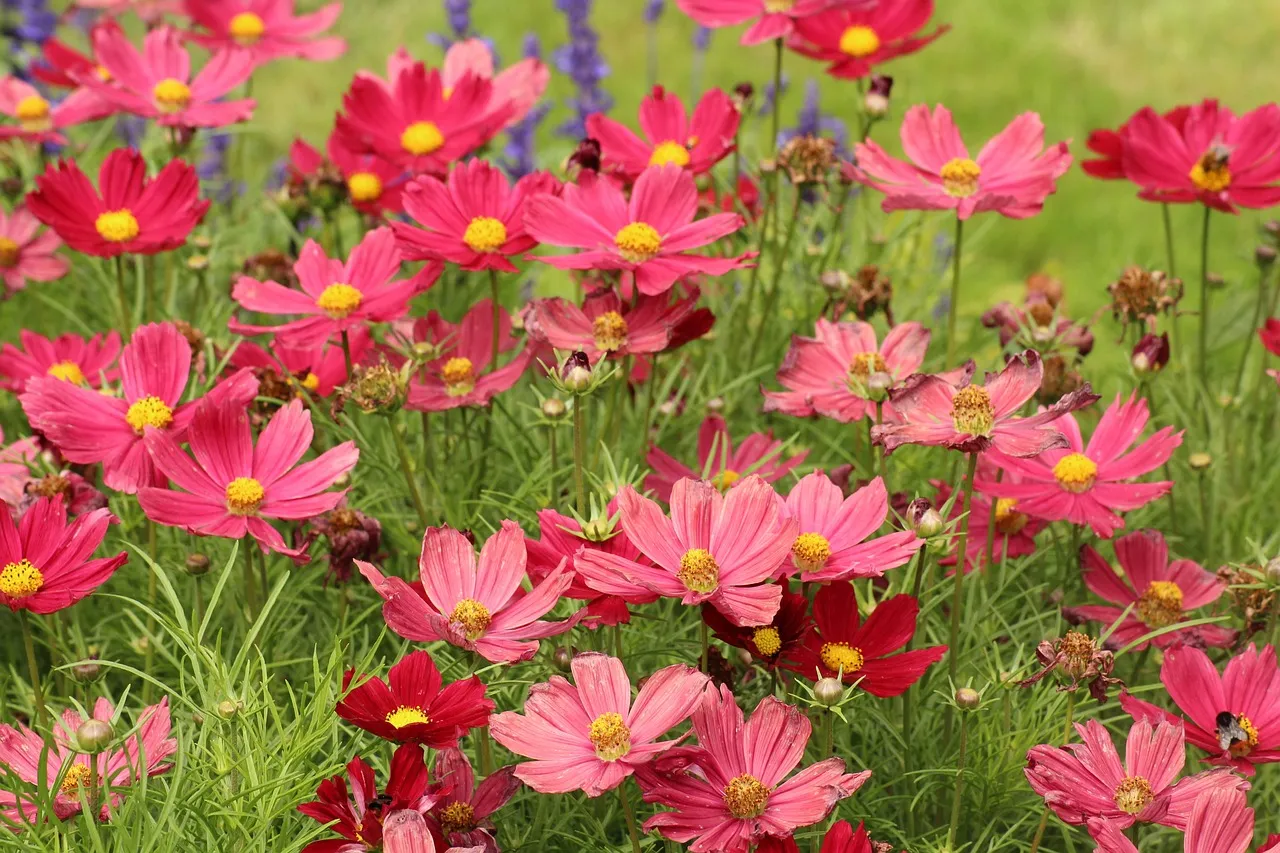Welcome to our comprehensive guide on “Balcony Gardening 101: Planting Cosmos in Pots.” If you’re an urban dweller looking to add a touch of natural beauty to your small outdoor space, you’ve come to the right place. In this blog post, we’ll walk you through the art of cultivating stunning Cosmos flowers in containers, making the most of your limited balcony area. Whether you’re a seasoned gardener or just starting, our expert tips and insights will help you create a vibrant and flourishing balcony garden that’s sure to impress. So, let’s roll up our sleeves and dive into the world of balcony gardening with Cosmos in pots!
Why Choose Cosmos for Balcony Gardening?
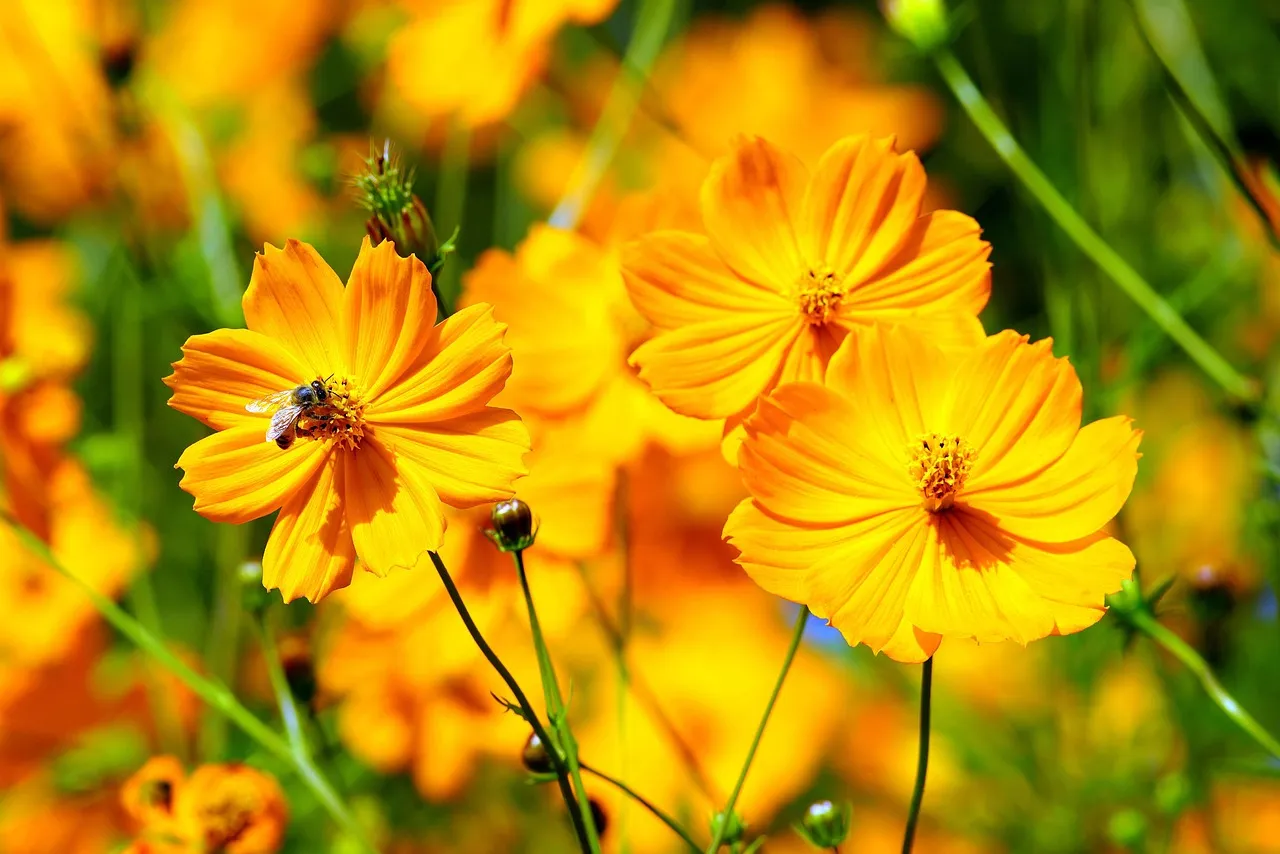
Cosmos flowers, with their vibrant hues and delicate, daisy-like blooms, are an excellent choice for balcony gardening. These hardy annuals offer several compelling reasons to grace your limited outdoor space.
Cosmos is renowned for its easy-going nature, making it an ideal option for beginners and experienced gardeners alike. They require minimal attention and can thrive even in containers, adding a touch of nature’s beauty to your balcony.
These flowers come in a variety of colors, from soft pastels to vivid pinks and oranges. This diversity allows you to create a visually stunning balcony garden that suits your personal style and aesthetic preferences.
Furthermore, Cosmos is known for attracting pollinators like butterflies and bees, contributing to the health of your local ecosystem. Their nectar-rich flowers make them a valuable addition to any urban garden, promoting biodiversity even in the heart of the city.
In summary, choosing Cosmos for your balcony garden not only brings beauty and color but also simplicity and ecological benefits. It’s a versatile choice that can elevate your outdoor space, whether you’re a gardening novice or a seasoned enthusiast.
Types of Cosmos:
Sensation Cosmos:
Sensation Cosmos, with its stunning, large flowers, is a popular choice for balcony gardening. These cosmos varieties come in a range of vibrant colors, including white, pink, and crimson. Their tall, graceful stems can reach up to 3 feet, making them an eye-catching addition to your potted garden. Sensation cosmos thrives in full sun and well-drained soil. With regular deadheading and proper care, they will provide a constant display of blooms throughout the growing season, enhancing the beauty of your balcony.
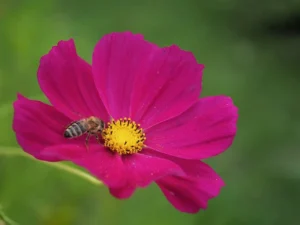
Sonata Cosmos:
Sonata cosmos are compact and well-suited for small balcony spaces. They offer a burst of color with their daisy-like flowers in shades of pink, white, and deep rose. Sonata cosmos typically grow to a height of about 12 to 18 inches, making them perfect for container gardening. These cosmos varieties are easy to care for and attract pollinators like butterflies. Their low-maintenance nature means you can enjoy their beauty with minimal effort, making them an excellent choice for beginners in balcony gardening.
Dwarf Cosmos:
Dwarf cosmos are the perfect choice for those seeking a more petite option. These cosmos varieties grow to a height of around 12 inches and come in various colors, including red, pink, and white. Their compact size makes them ideal for small pots on your balcony. Dwarf cosmos are easy to grow from seed and require minimal maintenance. Their cheerful blooms will brighten up your outdoor space, adding a touch of charm to your balcony garden.
Chocolate Cosmos:
Chocolate cosmos are known for their unique and delightful fragrance, reminiscent of chocolate. These cosmos varieties feature deep, velvety maroon to brownish-red flowers. While they may not be edible like chocolate, their scent is truly captivating. Chocolate cosmos require full sun and well-drained soil. Keep in mind that they are more sensitive to cold temperatures, so they are best suited for warmer climates or as annuals in colder regions. Planting chocolate cosmos on your balcony can create a sensory oasis, combining visual and aromatic pleasures.
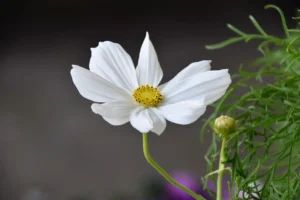
Seashell Cosmos:
Seashell cosmos are named for their distinct tubular petals that resemble seashells. These cosmos varieties come in shades of pink, white, and deep rose. They grow to a height of around 2 to 3 feet and are well-suited for larger containers. Seashell cosmos add a touch of whimsy to your balcony garden with their unique flower shape. They thrive in full sun and well-drained soil, and like other cosmos, they are relatively low-maintenance, rewarding you with abundant blooms.
Bright Lights Cosmos:
Bright Lights cosmos are a dazzling addition to your balcony garden. These cosmos varieties boast a mix of vibrant colors, including orange, yellow, and scarlet. Their multi-colored flowers add a playful and cheerful ambiance to your outdoor space. Bright Lights cosmos can reach heights of 4 to 6 feet, so make sure to provide them with adequate support in larger containers. These tall cosmos varieties are excellent for creating vertical interest and providing a burst of color that can be seen from afar on your balcony.
In summary, there is a cosmos variety to suit every balcony gardener’s preferences, from the tall and majestic Sensation cosmos to the compact and low-maintenance Sonata cosmos. Whether you’re seeking unique fragrance, petite blooms, or a riot of colors, cosmos plants offer an array of choices to enhance the beauty of your potted garden. Each type of cosmos brings its own charm and appeal, ensuring that your balcony garden is a delightful and captivating outdoor retreat.
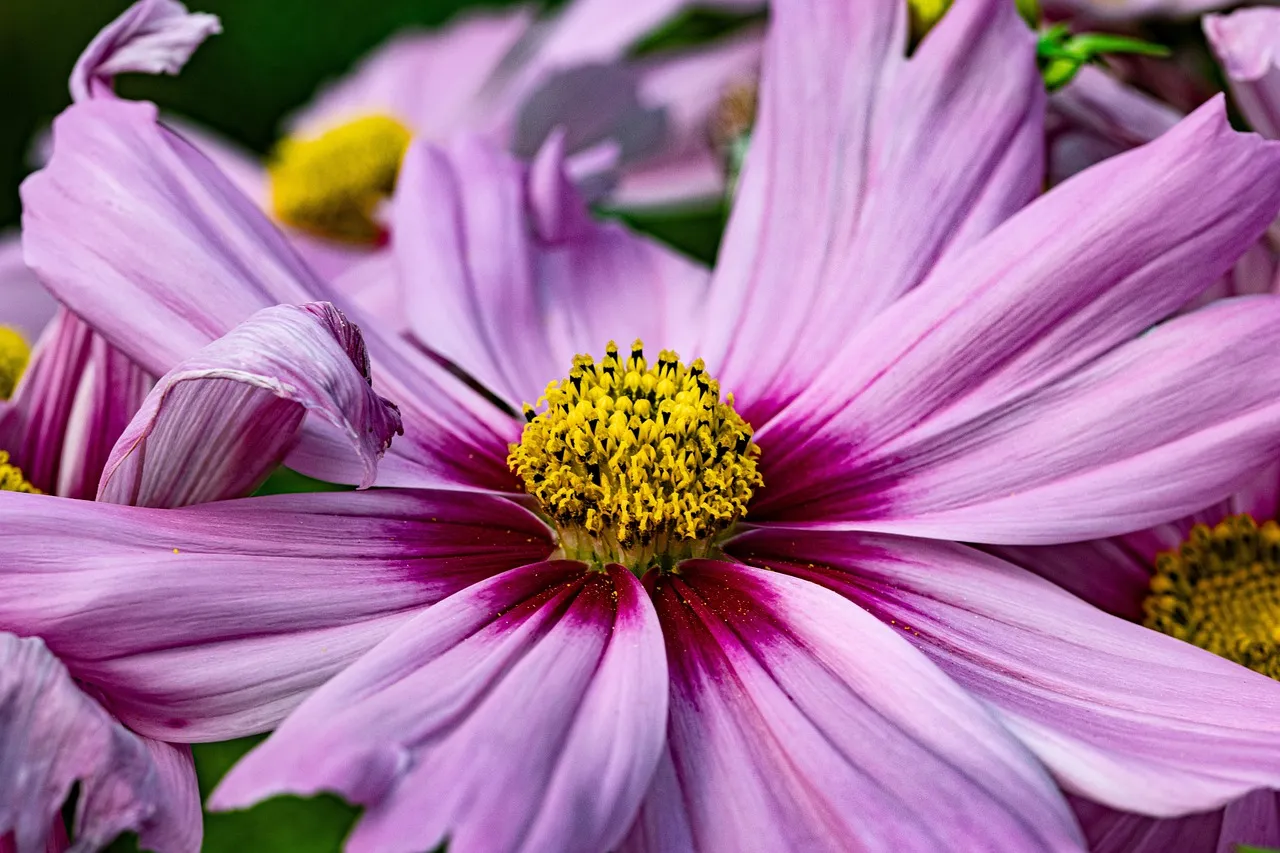
Selecting the Right Pots and Containers
Selecting the appropriate pots and containers is a crucial step in ensuring the success of your balcony garden with Cosmos flowers. The right choice can make a significant difference in the health and growth of your plants.
When it comes to Cosmos, opt for containers that are at least 12 inches deep and have drainage holes. Adequate depth allows the roots to grow comfortably and access necessary nutrients, while drainage holes prevent waterlogging, which can be detrimental to your plants’ health.
Consider the material of the pots as well. Lightweight materials like plastic or resin can be practical for balcony gardening since they are easy to move and won’t add unnecessary weight. However, clay or ceramic pots can provide stability and a touch of elegance to your garden.
Additionally, choose pots that match the size of the Cosmos you intend to grow. Taller varieties may require larger containers to support their height and root system.
Lastly, ensure that the pots you choose fit well on your balcony without overcrowding the space. Adequate spacing allows for proper air circulation and prevents your plants from competing for resources.
In conclusion, selecting the right pots and containers is a foundational step in cultivating healthy and thriving Cosmos on your balcony. Take the time to make informed choices that suit your specific needs and space constraints.
Essential Tools and Materials for Success
Embarking on your balcony gardening journey with Cosmos flowers requires a handful of essential tools and materials to ensure a successful and enjoyable experience. These items will help you care for your plants efficiently and effectively.
Trowel:
A hand trowel is indispensable for planting Cosmos seeds and seedlings in your chosen pots. It allows you to dig small holes with precision.
Pruners or Shears:
Pruning shears or scissors are essential for deadheading spent Cosmos blooms, promoting continuous flowering throughout the season.
Watering Can or Hose:
Consistent watering is crucial for Cosmos, so having a reliable watering can or hose with a gentle spray nozzle is essential.
Potting Mix:
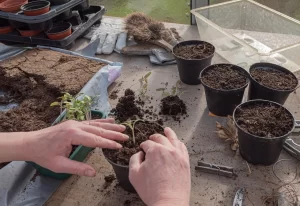
Choose a high-quality potting mix that provides good drainage and aeration for your Cosmos. Avoid using garden soil, as it can be too compact for container gardening.
Fertilizer:
Consider a balanced, water-soluble fertilizer to provide your Cosmos with the necessary nutrients. Follow the recommended dosage for container plants.
Stakes or Supports:
Depending on the Cosmos variety, you may need stakes or supports to keep tall plants upright, especially in windy conditions.
Mulch:
Mulch helps retain moisture, regulate soil temperature, and suppress weeds in your pots. Organic mulch like shredded bark or straw works well.
Gloves:
Protect your hands with gardening gloves, especially when handling soil and fertilizer.
Labels:
Use plant labels or markers to keep track of the Cosmos varieties you’re growing in different pots.
Sunscreen and Hat:
Don’t forget personal protection! Balcony gardening can be sunny work, so sunscreen and a wide-brimmed hat are advisable.
Having these essential tools and materials on hand will make your balcony gardening with Cosmos more convenient and enjoyable. Proper preparation ensures that you can care for your plants effectively and watch them thrive.
The Best Soil Mix for Cosmos in Pots
Creating the right soil mix is fundamental when planting Cosmos in pots. The soil composition directly affects the health and growth of your flowers, making it crucial to get it right.
Begin by using a top-notch potting mix tailored for containers. These blends are created to offer the perfect combination of air, drainage, and moisture retention, all vital for potted plants.
To further enhance your soil mix for Cosmos, consider the following:

Perlite or Vermiculite:
These additives improve soil aeration and drainage, preventing the soil from becoming too compact.
Compost:
Incorporating compost enriches the soil with essential nutrients, promoting healthy Cosmos growth.
Worm Castings:
Worm castings are a natural fertilizer that adds nutrients and beneficial microorganisms to the soil.
Peat Moss:
Peat moss retains moisture, helping to keep the soil consistently damp, which is beneficial for Cosmos.
Organic Matter:
Adding organic matter like well-rotted manure or leaf mold can improve soil structure and fertility.
When mixing your soil, aim for a well-draining yet moisture-retentive blend. Ensure that the soil is loose and fluffy, as compacted soil can lead to drainage issues and hinder root growth.
In summary, the best soil mix for Cosmos in pots is a high-quality potting mix amended with additives like perlite, compost, worm castings, peat moss, and organic matter. Proper soil preparation sets the foundation for healthy and thriving Cosmos on your balcony.
Sowing Cosmos Seeds: Step-by-Step Guide
Sowing Cosmos seeds is a rewarding and straightforward process that allows you to watch your balcony garden come to life. Follow these step-by-step instructions to ensure a successful start to your Cosmos plants.
Choose the Right Time:
Start by selecting the appropriate time for sowing Cosmos seeds. In most regions, it’s best to sow them in the early spring after the last frost date. This gives the plants ample time to grow and bloom during the growing season.
Prepare Your Pots:
Fill your chosen pots with the prepared soil mix, leaving about an inch of space below the rim. Pat the soil down gently to create a level surface.
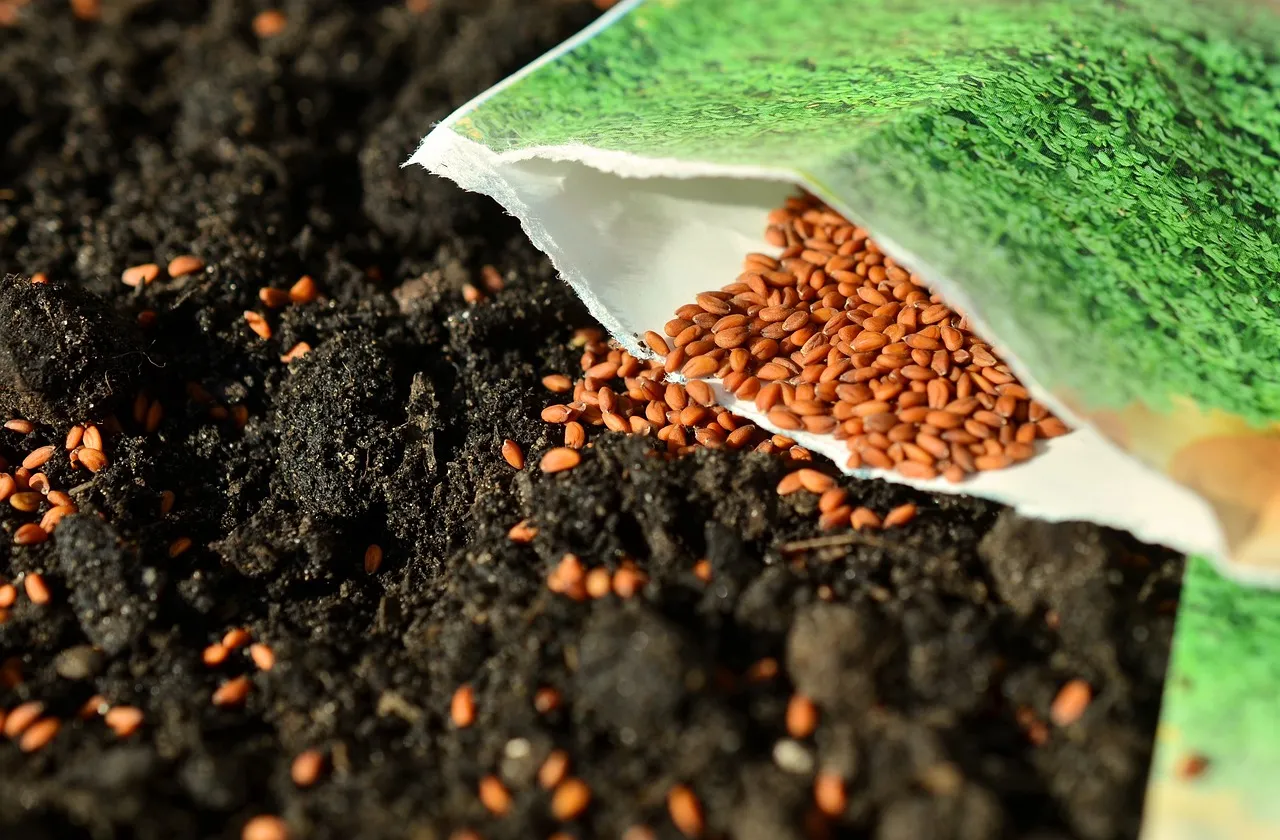
Sow the Seeds:
Sprinkle Cosmos seeds evenly over the soil surface. You can space them about 6 inches apart for adequate growth room. Lightly press the seeds into the soil, but avoid burying them too deeply; a gentle press is all that’s needed.
Water Thoroughly:
After sowing, water the pots thoroughly to settle the soil and ensure good seed-to-soil contact. Be careful not to wash away the seeds; a gentle spray or a fine mist is ideal.
Cover and Label:
Place a thin layer of soil or vermiculite over the seeds to cover them lightly. Label the pots with the Cosmos variety and the date of sowing.
Provide Optimal Conditions:
Cosmos seeds germinate best at temperatures around 70°F (21°C). Place the pots in a sunny location with consistent warmth, such as a south-facing balcony or a sunny windowsill.
Maintain Moisture:
Keep the soil consistently moist but not waterlogged during the germination period. Using a spray bottle can help you maintain the right level of moisture without disturbing the seeds.
Watch for Germination:
Cosmos seeds typically germinate within 7 to 14 days. Once you see seedlings emerging, remove any covering and continue to provide adequate sunlight.
Thin Seedlings:
If multiple seedlings sprout in close proximity, thin them out, leaving only the strongest one to grow in each spot.
Transplant When Ready:
When the Cosmos seedlings have developed a set of true leaves and are a few inches tall, they are ready for transplanting into larger pots or containers.
By following these steps, you can successfully sow Cosmos seeds and set the stage for a beautiful display of these vibrant flowers on your balcony. Remember to be patient, as Cosmos will reward your efforts with an explosion of color as they grow and bloom.
Caring for Young Cosmos Seedlings
Once your Cosmos seedlings have emerged and grown a bit, it’s crucial to provide them with the care they need to thrive. Young Cosmos plants are delicate, and proper attention at this stage sets the foundation for robust growth and abundant flowering.
Here’s how to care for young Cosmos seedlings:
Watering:
Continue to keep the soil consistently moist, but be cautious not to overwater, which can lead to root rot. Use a gentle spray or watering can with a fine nozzle to avoid disturbing the fragile seedlings.
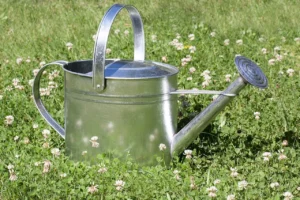
Thinning:
If multiple seedlings have sprouted in the same spot, thin them out to leave only one strong seedling per location. Crowded plants will compete for resources and may not develop well.
Fertilizing:
Once your seedlings have settled in and grown a few inches tall, you can begin nourishing them with balanced, water-soluble fertilizer. Be sure to adhere to the recommended dosage as provided on the fertilizer packaging.
Sunlight:
Make sure your young Cosmos seedlings get plenty of sunlight. They love full sun, so aim for 6 to 8 hours of direct sunlight daily. If growing indoors, put them by a sunny window or use grow lights.
Protection:
Protect your seedlings from strong winds and extreme weather conditions. Young Cosmos plants can be sensitive to harsh elements, so provide some shelter if necessary.
Support:
Depending on the Cosmos variety you’re growing, consider providing support or stakes to keep the plants upright as they grow taller.
Observation:
Regularly check for signs of pests or diseases. Early detection allows for prompt action to prevent potential issues from spreading.
As your Cosmos seedlings continue to grow, you’ll witness their transformation into robust plants with lush foliage and vibrant blooms. Proper care during this stage is essential for a successful balcony garden filled with beautiful Cosmos flowers.
Transplanting Cosmos to Larger Pots
As your Cosmos seedlings grow, they will outgrow their initial pots and require transplanting into larger containers. This step is crucial for ensuring that your Cosmos plants have enough space to thrive and produce abundant blooms on your balcony.
Follow these steps to transplant your Cosmos seedlings into larger pots:
Select the Right Time:
Transplant your Cosmos seedlings when they have grown large enough to handle and have developed a set of true leaves. This typically occurs when they are 3 to 4 inches tall.
Prepare Larger Pots:
Choose pots that are at least 12 inches in diameter and have drainage holes. Fill them with a high-quality potting mix, leaving enough space for the seedlings to sit at the same depth as they were in their original pots.
Water the Seedlings:
Before transplanting, water the seedlings in their current pots to help loosen the soil and ease the removal process.
Gently Remove Seedlings:
Carefully remove the seedlings from their original pots by gently squeezing the sides of the pot or tapping it upside down to slide them out. Handle the seedlings by their leaves to avoid damaging the delicate stems.
Transplant Seedlings:
Dig a small hole in the center of the larger pot’s soil mix and place the seedling in the hole. Fill in the hole with soil and gently pat it down around the base of the seedling.
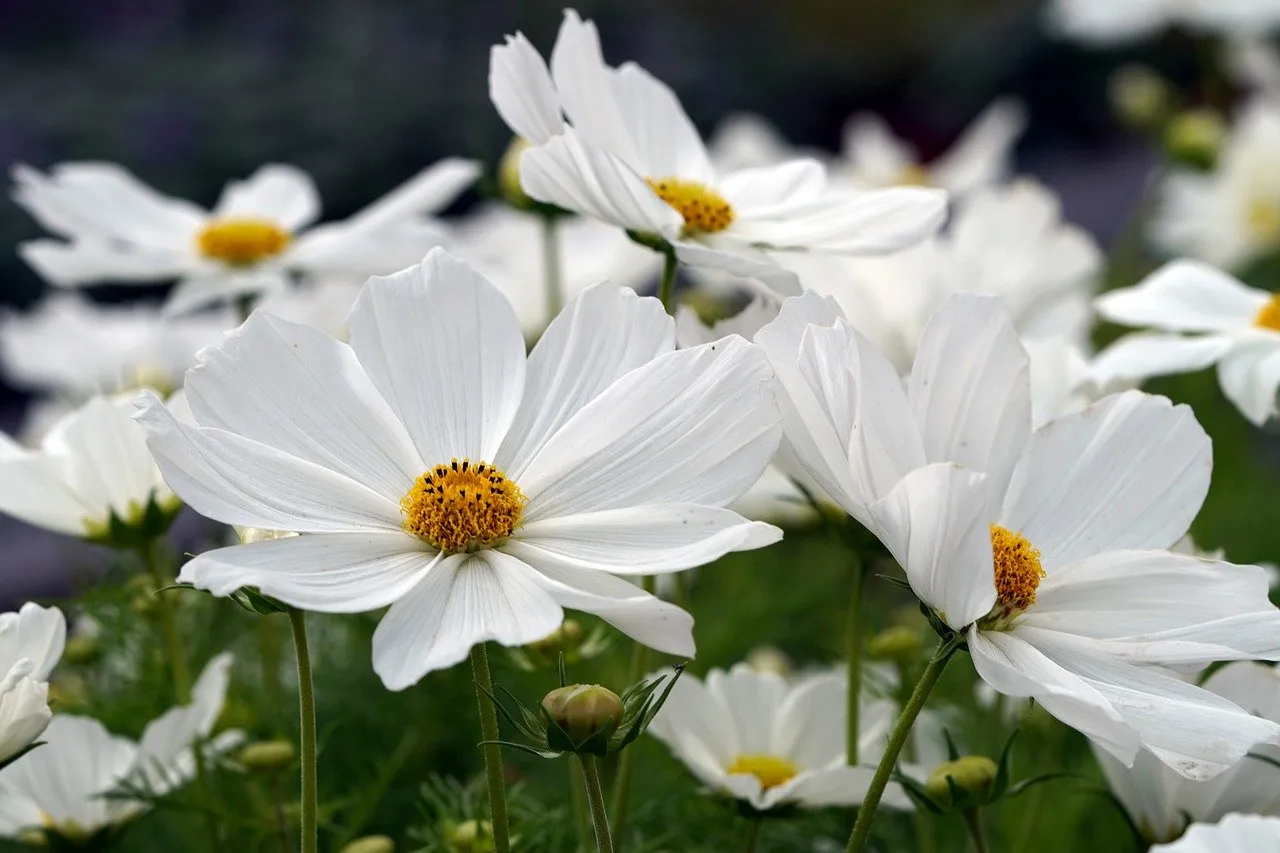
Water Thoroughly:
After transplanting, water the seedlings thoroughly to settle the soil and eliminate any air pockets around the roots.
Maintain Sunlight:
Place the newly transplanted Cosmos pots in a location that receives adequate sunlight. Continue to provide at least 6 to 8 hours of direct sunlight daily.
Continue Care:
Follow the same care routine for the transplanted Cosmos as you did for the seedlings, including consistent watering and fertilizing as needed.
Transplanting your Cosmos seedlings into larger pots gives them room to grow and develop strong root systems. It’s a pivotal step in balcony gardening that will contribute to the overall health and vigor of your Cosmos plants.
Optimal Sunlight and Watering Practices
Balcony gardening with Cosmos requires careful attention to sunlight and watering practices to ensure that your plants thrive. Proper exposure to sunlight and appropriate watering techniques are essential for the health and vitality of your Cosmos flowers.
Sunlight Requirements:
Cosmos is a sun-loving plant, and providing them with the right amount of sunlight is crucial for their growth and blooming. Here are some essential tips for ensuring optimal sunlight conditions:
Full Sun:
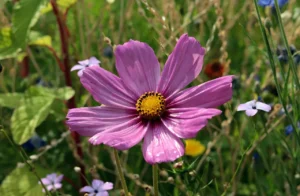
Cosmos thrive in full sun, which means they need at least 6 to 8 hours of direct sunlight daily. Ensure that your balcony receives adequate sunlight, and place your Cosmos pots in the sunniest spots available.
Rotate Pots:
If your balcony has limited sun exposure from certain angles, consider rotating your Cosmos pots throughout the day to ensure all sides of the plants receive adequate sunlight. This helps prevent the plants from leaning or reaching for the light.
Use Reflective Surfaces:
Maximize sunlight by placing light-colored or reflective surfaces nearby. These can bounce additional sunlight onto your Cosmos plants, enhancing their overall growth.
Consider Grow Lights:
If your balcony doesn’t receive sufficient sunlight, especially during certain seasons, supplemental grow lights can be a valuable investment. LED grow lights can provide the necessary light spectrum for healthy Cosmos growth.
Watering Practices:

Proper watering is equally critical for the well-being of your Cosmos plants. Overwatering and underwatering can both lead to problems, so it’s essential to strike the right balance:
Watering Frequency:
The frequency of watering your potted Cosmos varies based on weather, pot size, and soil. Water when the top inch of soil is dry. Avoid a strict schedule and adapt to your plants’ needs.
Morning Watering:
Whenever you can, water your Cosmos in the morning. This gives extra moisture time to evaporate, lowering the risk of fungal diseases that like dampness.
Watering Technique:
Use a gentle watering technique to avoid disturbing the soil and plant roots. A watering can with a fine nozzle or a hose with a spray attachment works well. Ensure that the water reaches the root zone without splashing the foliage.
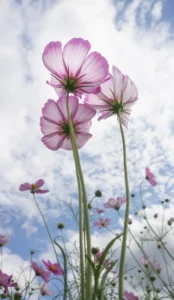
Deep Watering:
When you water, try to thoroughly soak the soil down to the roots. Deep watering helps grow strong roots. Don’t just water the surface, as shallow watering can lead to weak roots.
Mulching:
Applying a layer of organic mulch around your Cosmos plants can help retain soil moisture, reducing the frequency of watering while maintaining consistent moisture levels.
Avoid Waterlogged Soil:
It’s important to check that your pots have sufficient drainage holes. Additionally, be cautious not to let them sit in saucers filled with water, as soil saturated with excess water can result in various problems, such as root rot and other plant health issues. Proper drainage and moisture management are key factors in maintaining the well-being of your potted plants.
By paying close attention to sunlight and adopting proper watering practices, you’ll create an environment where your Cosmos plants can thrive. These fundamental care steps are essential for promoting healthy growth and vibrant blooms on your balcony.
Fertilizing Cosmos for Healthy Growth
Fertilizing your Cosmos plants is an essential part of balcony gardening, as it provides the necessary nutrients to support healthy growth and abundant flowering. Understanding when and how to fertilize your Cosmos is key to a successful balcony garden.
When to Fertilize:
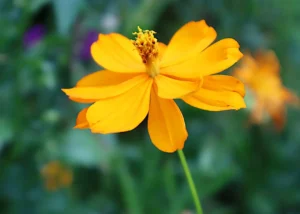
Cosmos plants benefit from regular feeding during the growing season. Here’s a guideline on when to fertilize your Cosmos:
Start Early:
Begin fertilizing when your Cosmos seedlings are a few inches tall and have developed a set of true leaves. This is typically a few weeks after transplanting them into larger pots.
Repeat Every 4-6 Weeks:
Throughout the growing season, which spans from spring to fall, fertilize your Cosmos every 4 to 6 weeks. This provides a steady supply of nutrients to support continuous growth and flowering.
Reduce in Late Summer:
As the growing season comes to a close in late summer or early fall, reduce the frequency of fertilization. This signals the plants to start slowing down their growth in preparation for dormancy.
Choosing the Right Fertilizer:
Selecting the appropriate fertilizer is crucial for the health of your Cosmos. Look for a balanced, water-soluble fertilizer with a ratio like 10-10-10 or 20-20-20, which indicates equal proportions of nitrogen (N), phosphorus (P), and potassium (K).
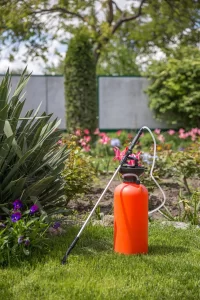
How to Apply Fertilizer:
Follow these steps to apply fertilizer to your Cosmos in pots:
Dilute the Fertilizer:
Mix the fertilizer according to the manufacturer’s instructions. It’s essential not to over-fertilize, as this can harm your plants.
Apply to Moist Soil:
Water your Cosmos thoroughly before applying fertilizer. This prevents the roots from burning when the fertilizer is added.
Even Distribution:
Apply the diluted fertilizer evenly around the base of your Cosmos plants. Avoid getting fertilizer on the foliage, as this can cause leaf burn.
Water After Fertilizing:
After applying fertilizer, water the pots again to help distribute the nutrients throughout the soil.
Avoid Fertilizing Dry Plants:
Refrain from fertilizing when the soil is extremely dry, as it may lead to fertilizer burn. Always water the plants first.
Organic Alternatives:

If you prefer organic gardening practices, you can use compost, well-rotted manure, or organic liquid fertilizers as alternatives. These options provide nutrients to your Cosmos while enriching the soil with organic matter.
By following these fertilization guidelines, you can ensure that your Cosmos plants receive the nutrients they need to flourish on your balcony. Remember that moderation is key, and a well-balanced feeding schedule contributes to healthy growth and a stunning display of blooms.
Dealing with Common Pests and Diseases
While balcony gardening with Cosmos can be a rewarding experience, it’s essential to be prepared to deal with common pests and diseases that may affect your plants. Recognizing the signs and taking appropriate action is key to maintaining a healthy balcony garden.
Common Pests:
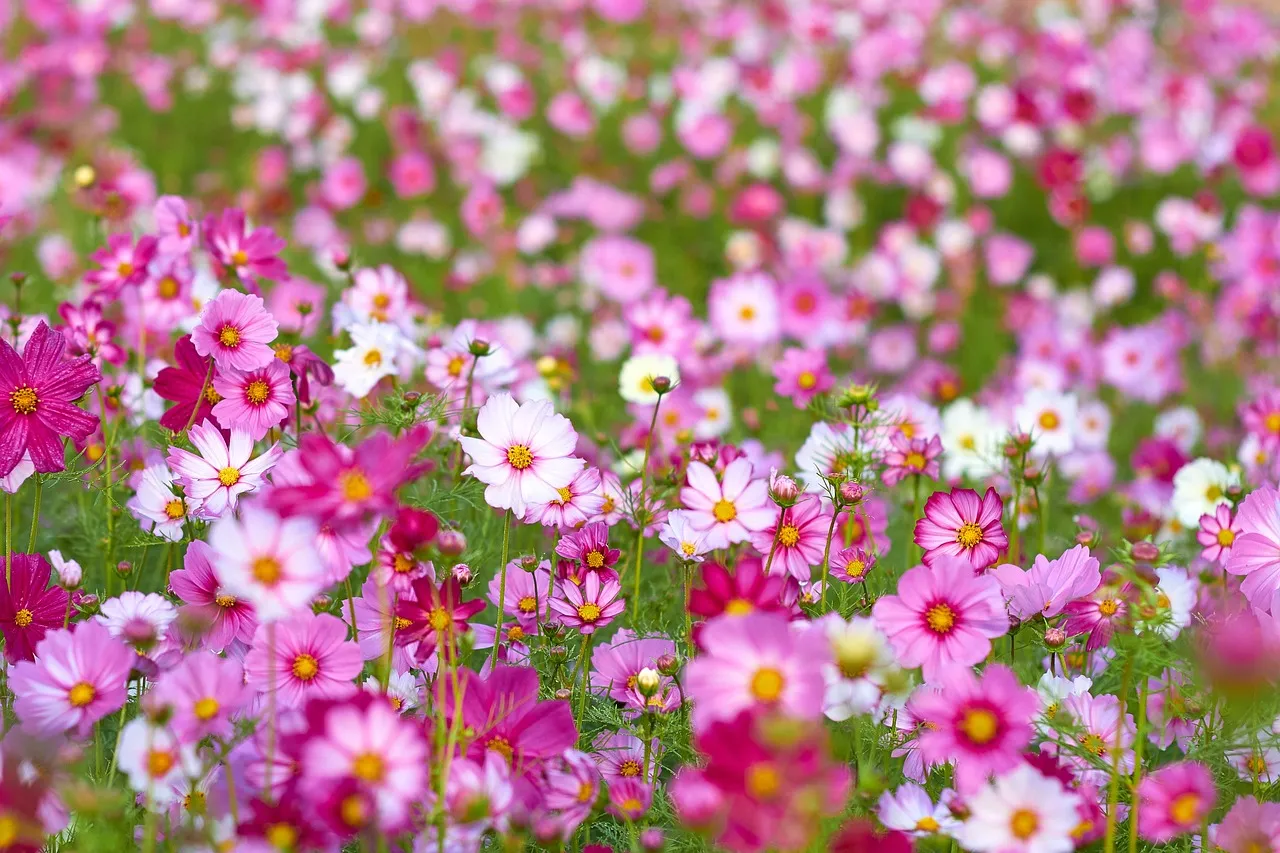
Aphids:
Aphids, tiny soft-bodied insects, feed on plant sap, which can deform plant growth and create sticky honeydew residue. To manage aphids, you can employ several methods. You might use a forceful stream of water to remove them, preventing damage to your plants. Alternatively, applying neem oil can help deter aphids. Additionally, introducing natural predators, such as ladybugs, can be an effective way to keep these pests in check.
Spider Mites:
Spider mites are tiny pests that suck the sap from plant leaves, causing stippling and webbing. Regularly misting your Cosmos plants and keeping them well-hydrated can deter spider mites. In severe infestations, use insecticidal soap or neem oil.
Whiteflies:
Whiteflies are small, white insects that feed on plant sap and can transmit diseases. You can use yellow sticky traps, neem oil, or insecticidal soap to control whiteflies.
Slugs and Snails:
These pests can chew on Cosmos leaves, leaving irregular holes. You can use physical barriers like copper tape or diatomaceous earth to deter them. Beer traps and hand-picking are also effective methods.
Common Diseases:

Powdery Mildew:
Powdery mildew appears as a white, powdery substance on plant leaves. Ensure good air circulation around your Cosmos plants, avoid overhead watering, and use fungicidal sprays if needed.
Fungal Leaf Spot:
Leaf spot diseases manifest as dark spots with yellow halos on the foliage. Remove affected leaves promptly and apply a fungicide to prevent further spread.
Root Rot:
Root rot occurs due to overly wet conditions, which can lead to root damage and decay. To prevent root rot, ensure proper drainage in your pots and avoid overwatering.
Botrytis (Gray Mold):
Gray mold can develop on dead or decaying plant material. Remove affected plant parts and ensure good air circulation to prevent its spread.
Regularly inspect your Cosmos plants for signs of pests and diseases, especially during the growing season. Early detection and prompt action are crucial for effectively managing these issues and maintaining the health of your balcony garden.
Pruning and Deadheading Cosmos for More Blooms
Pruning and deadheading are essential practices for promoting continuous blooming and maintaining the overall health and appearance of your Cosmos plants on your balcony.

Pruning for Shape and Size:
Pinch Back Early:
When your Cosmos plants reach a height of about 12 inches, consider pinching back the growing tips. This encourages branching and results in a bushier, more compact plant.
Remove Dead Growth:
Regularly inspect your Cosmos for dead or yellowing leaves and spent flowers. Prune these away to enhance the plant’s appearance and redirect energy toward new growth and blooming.
Thinning:
If your Cosmos plants start to crowd or tangle, thin them out. Remove some stems at their base. This action enhances air circulation, lowering the risk of disease for your plants.
Cut Back Leggy Growth:
If your Cosmos plants become tall and leggy with few blooms, you can cut them back by about one-third of their height. This will encourage them to produce more flowers and bushier growth.
Deadheading for Continuous Blooms:

Regular Deadheading:
Deadheading involves removing spent or fading flowers from your Cosmos plants. Use clean, sharp pruning shears or scissors to snip off the old blooms where they meet the stem.
Frequency:
To keep your Cosmos blooming, remove faded flowers often, ideally every few days. This stops seed formation and prompts the plant to produce more beautiful flowers, keeping your garden vibrant.
Extended Bloom Period:
Deadheading not only keeps your Cosmos looking tidy but also extends their blooming period. You’ll enjoy a longer display of colorful flowers on your balcony.
By incorporating pruning and deadheading into your care routine, you can keep your Cosmos plants looking their best and ensure a continuous profusion of vibrant blooms throughout the growing season.
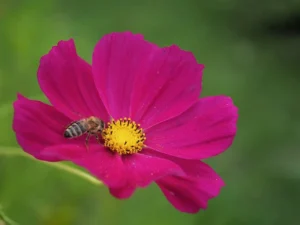
Companion Plants to Enhance Your Balcony Garden
Companion planting involves strategically placing plants together in your balcony garden to maximize their mutual benefits. When it comes to growing Cosmos in pots, choosing the right companion plants can enhance the overall beauty and health of your garden.
Here are some excellent companion plants to consider for your Cosmos balcony garden:
Marigolds:

Marigolds are not only visually striking but also deter aphids and nematodes, which can affect Cosmos. Plant them alongside your Cosmos for added protection.
Lavender:
Lavender not only complements the aesthetic of Cosmos with its soothing fragrance but also attracts pollinators like bees and butterflies.

Nasturtiums:
Nasturtiums are known for their vibrant colors and edible flowers. They can act as a natural pest repellent and provide a beautiful contrast to Cosmos.
Zinnias:
Zinnias come in a variety of colors and sizes, making them a versatile companion for Cosmos. They also attract pollinators and add diversity to your garden.
Alyssum:

Alyssum is a low-growing, fragrant flower that can serve as a ground cover around your Cosmos pots, creating a visually appealing carpet of blooms.
Basil:
Basil not only adds culinary value but also repels aphids and flies. Plant it near your Cosmos for both practical and aesthetic benefits.
Chives:
Chives deter aphids and provide an oniony flavor to your culinary creations. Their slender, green leaves complement the tall Cosmos blooms.
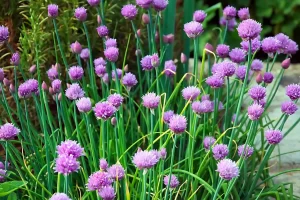
Salvia:
Salvias are attractive to hummingbirds and butterflies, and their vibrant colors make them an eye-catching addition to your Cosmos garden.
When selecting companion plants, consider factors like sunlight requirements, water needs, and compatibility in terms of height and growth habits. A well-thought-out combination of Cosmos and companion plants can create a harmonious and visually appealing balcony garden.
Overwintering Cosmos: Tips for Year-Round Beauty
While Cosmos is an annual plant, it is possible to extend its beauty into the next growing season through overwintering techniques. By following these tips, you can ensure that your Cosmos plants return with a flourish when the weather warms up.
Container Size:
Choose larger containers for your Cosmos if you plan to overwinter them. Larger pots provide more insulation for the roots during the winter months.
Trim Back:
Before winter sets in, trim back your Cosmos plants to a height of about 4 to 6 inches. This reduces the risk of wind damage and prevents the plants from becoming too tall indoors.
Bring Indoors:

As the weather gets colder and the first frost approaches, bring your potted Cosmos indoors. Place them in a cool, bright location with temperatures between 40°F to 50°F (4°C to 10°C). A garage, basement, or unheated room can work well.
Water Sparingly:
During the winter, Cosmos plants require less water. Water sparingly to keep the soil lightly moist but not saturated. Overwatering can lead to root rot in the absence of active growth.
Provide Light:
Place your overwintering Cosmos near a window that receives bright, indirect sunlight. You can also supplement natural light with grow lights to ensure they get enough illumination.
Inspect for Pests:
Regularly check your overwintering Cosmos for signs of pests like aphids or spider mites. Isolate and treat any affected plants promptly to prevent infestations from spreading.
Prune as Needed:
Trim back any leggy or unhealthy growth during the winter months to maintain the plant’s shape and health.
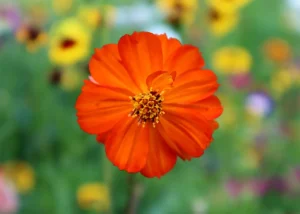
Gradual Transition:
In early spring, as the risk of frost diminishes and temperatures rise, gradually acclimate your Cosmos plants to outdoor conditions. Start by placing them in a sheltered location outdoors for a few hours a day, gradually increasing the time.
Resume Regular Care:
Once all danger of frost has passed, transplant your overwintered Cosmos back into larger pots with fresh potting mix. Resume regular watering and fertilizing as needed.
By following these steps, you can successfully overwinter your Cosmos plants and enjoy an early start to the growing season with established plants that will soon burst into a beautiful display of blooms on your balcony.
Harvesting Cosmos Seeds for Future Seasons
Harvesting Cosmos seeds is a gratifying process that allows you to save seeds for future growing seasons, share them with fellow gardeners, or simply enjoy the beauty of Cosmos in a different way. Here’s how to harvest and store Cosmos seeds:
Timing:
Wait until the Cosmos flowers have fully bloomed and started to fade. The petals will begin to wither and fall off, revealing the seed heads beneath.
Collecting Seeds:
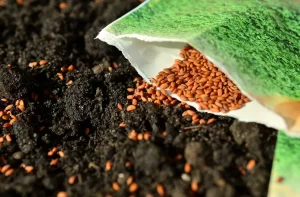
Gently pluck the seed heads from the Cosmos plant. Place them in a paper bag or on a clean, dry surface to further dry and mature.
Drying:
Allow the seed heads to air dry in a cool, dry place for about one to two weeks. Ensure that they’re very well dry earlier than intending to the following step.
Extracting Seeds:
To extract the seeds, lightly rub the dried seed heads among your palms or on a smooth surface. The seeds will separate without difficulty from the spent flower heads.
Cleaning:
Use a fine sieve or strainer to remove any remaining debris or chaff from the seeds. You can also blow gently over the seeds to help separate them from any remaining debris.
Storage:
Store the cleaned Cosmos seeds in a cool, dry place in an airtight container, such as a small jar or envelope. Be sure to label the container with the Cosmos variety and the date of harvesting.
Longevity:
When stored properly, Cosmos seeds can remain viable for several years. Keep them in a dark, cool place away from moisture and temperature fluctuations.
Germination Test:
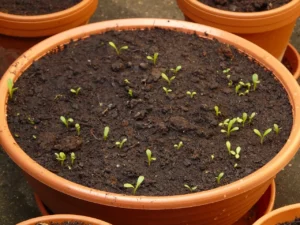
If you’re unsure about the viability of stored seeds, you can conduct a germination test before planting. Place a few seeds on a damp paper towel and keep it in a warm, well-lit location. Check for germination after a week or two.
By harvesting and storing Cosmos seeds, you can perpetuate the beauty of these flowers on your balcony year after year, share them with fellow gardeners, or simply enjoy the satisfaction of nurturing a plant from seed to bloom.
Showcasing Your Cosmos-Adorned Balcony Garden
After all the care and effort you’ve invested in planting Cosmos in pots on your balcony, it’s time to showcase your vibrant and thriving garden. Here are some creative ideas for displaying your Cosmos and making the most of your outdoor space:
Vertical Gardens:
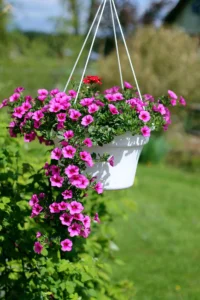
To craft a vertical garden with your Cosmos, consider wall-mounted or hanging planters. These options optimize space and enhance balcony aesthetics.
Color Coordination:
Plan your Cosmos planting scheme to include complementary colors or create a color gradient. The harmonious color palette will make your balcony garden visually stunning.
Tiered Plant Stands:
Utilize tiered plant stands to create an attractive display of different plant heights. Position your Cosmos at varying heights to maximize their visual impact.
Flowering Combos:
Pair your Cosmos with other flowering plants that have contrasting textures and shapes. Mixing in a variety of blooms creates a dynamic and captivating garden.
Hanging Baskets:
Suspend hanging baskets of Cosmos from your balcony’s railing or ceiling. This adds a whimsical and eye-catching element to your garden.
Fairy Lights:
String fairy lights around your balcony garden to create a magical ambiance in the evenings. The soft glow enhances the beauty of your Cosmos and extends your garden’s charm into the night.
Container Variety:
Experiment with different container types, shapes, and sizes to add diversity to your balcony garden. Unique containers, like vintage crates or decorative pots, can be focal points.

Fragrant Additions:
Incorporate fragrant plants like lavender, rosemary, or jasmine alongside your Cosmos to stimulate your senses while you enjoy your outdoor space.
Seating Area:
Create a cozy seating area on your balcony surrounded by your Cosmos garden. Use comfortable furniture and cushions to make it a relaxing retreat.
Seasonal Accents:
Change out seasonal accents like cushions, tablecloths, or decorative items to match the blooming cycles of your Cosmos. This keeps your balcony garden looking fresh and inviting.

Remember to maintain your Cosmos garden with regular care, including watering, deadheading, and occasional pruning, to ensure it remains a stunning focal point on your balcony. With these creative ideas, you can transform your outdoor space into a captivating haven of natural beauty.
Conclusion
In conclusion, embarking on the journey of balcony gardening with Cosmos in pots is a delightful adventure that promises a symphony of colors, the joy of nurturing life, and a serene escape right outside your door. By choosing the right pots, soil mix, and Cosmos varieties, you’ve set the stage for a thriving balcony garden. Throughout this journey, you’ve learned the importance of sunlight, watering practices, and fertilization to ensure your Cosmos blooms with vitality.
Caring for your Cosmos seedlings, transplanting them to larger pots, and addressing common pests and diseases have equipped you with the skills to nurture your garden’s health. Pruning and deadheading, along with the selection of compatible companion plants, have added layers of beauty and sophistication to your outdoor oasis.
You’ve explored the art of overwintering, extending the life of your Cosmos, and the satisfaction of harvesting seeds for future seasons. Finally, you’ve discovered creative ways to showcase your Cosmos-adorned balcony garden, turning it into a picturesque haven for relaxation and inspiration.
As your balcony garden flourishes, it not only elevates the aesthetic of your living space but also provides solace, a connection to nature, and a sense of accomplishment. Each day, as you step onto your balcony, the vibrant Cosmos blooms will greet you with their resplendent beauty, reminding you of the rewards of nurturing life in the heart of the urban landscape. So, savor this journey, continue to care for your Cosmos with dedication, and let the balcony gardening adventure be a constant source of tranquility and inspiration in your everyday life.
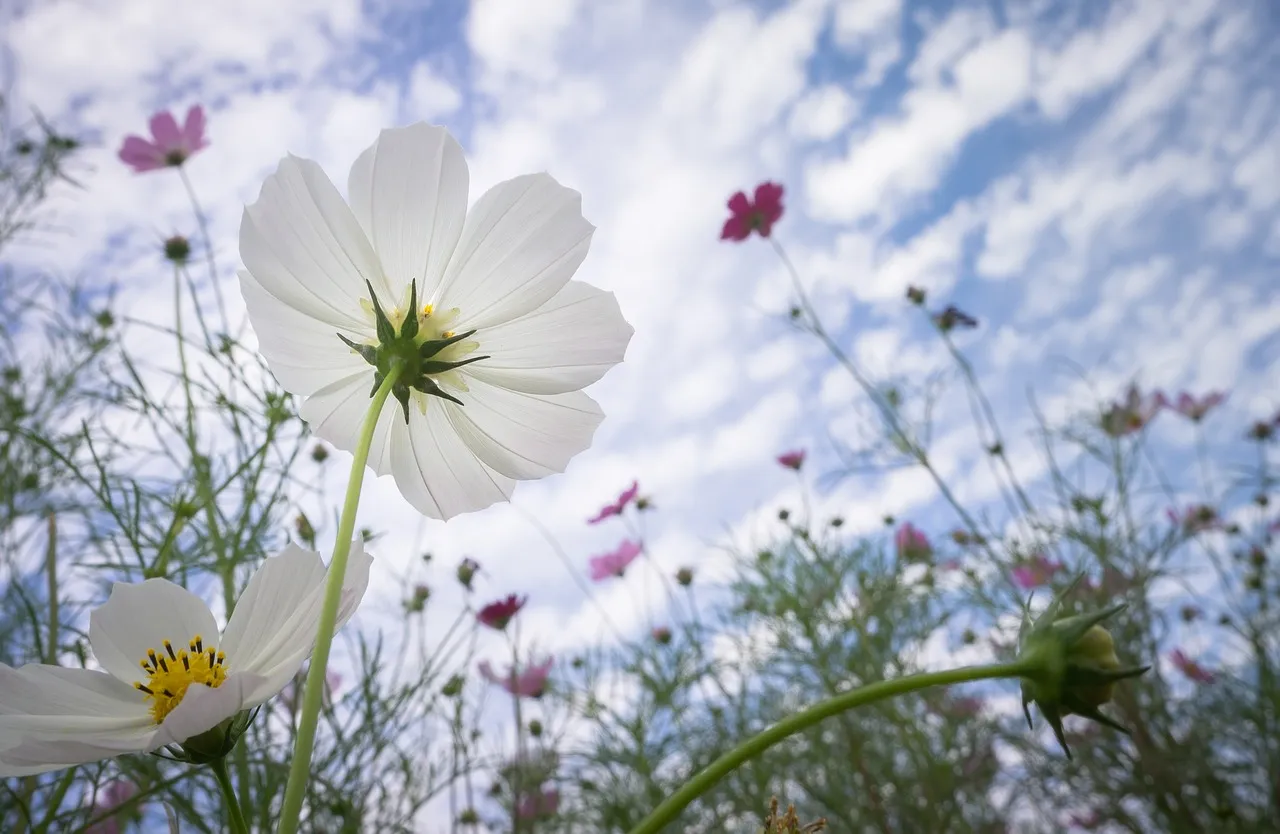
Frequently Asked Questions
When is the Best Time to Plant Cosmos in Pots?
The ideal time to plant Cosmos in pots depends on your local climate. In most regions, it’s best to plant Cosmos in late spring or early summer, after the last frost has passed. This ensures that the young seedlings won’t be exposed to cold temperatures. However, in warmer climates, you can start planting earlier, even in early spring. Be sure to check your local frost dates and weather conditions to determine the most suitable planting time for your balcony garden.
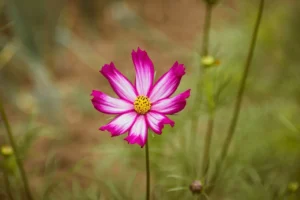
What Size Pots are Suitable for Cosmos Plants?
Cosmos plants thrive with ample room for roots. Opt for pots at least 12 inches wide. Larger containers, like 16 to 18 inches, create optimal conditions. Bigger pots retain more moisture and nutrients, promoting healthy, robust Cosmos. Moreover, they offer stability for taller varieties.
How Often Should I Water Cosmos in Pots?
The frequency of watering Cosmos in pots depends on various factors, including weather conditions, pot size, and soil type. As a general guideline, water your Cosmos when the top inch of soil feels dry to the touch. Avoid a strict watering schedule and adjust based on your plant’s needs.
During hot, dry spells, you may need to water more frequently, while in cooler, rainy periods, you can water less often. Always aim to keep the soil evenly moist but not waterlogged to prevent root rot.
Can I Grow Cosmos from Seeds in Pots?
Yes, you can absolutely grow Cosmos from seeds in pots. It’s a cost-effective and rewarding way to cultivate these beautiful flowers. Start by filling your pots with a well-draining potting mix. Sow Cosmos seeds directly on the surface of the soil and gently press them down. Water lightly, and within a few weeks, you’ll see the seedlings emerge. Remember to thin them out if they become overcrowded, allowing enough space for each plant to grow and thrive.
What Type of Soil Mix is Best for Cosmos in Pots?
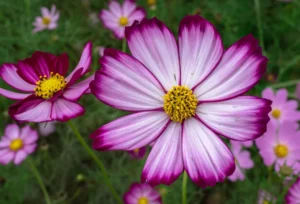
Cosmos plants thrive in well-draining soil. A high-quality potting mix with good drainage properties is ideal for growing Cosmos in pots. You can also add some perlite or coarse sand to the mix to improve drainage. Ensure that the soil is rich in organic matter, as this will provide essential nutrients for your Cosmos throughout the growing season. Avoid using garden soil, as it may not provide the necessary drainage and aeration required for container gardening.
How Tall do Cosmos Plants in Pots Grow?
The height of Cosmos plants in pots can vary depending on the variety you choose. Dwarf Cosmos varieties typically grow to a height of around 12 to 18 inches, making them suitable for smaller containers. Taller varieties, like Sensation Cosmos or Seashell Cosmos, can reach heights of 3 to 6 feet in larger pots. Consider the mature height of the Cosmos variety you select when choosing your pot size to ensure your balcony garden looks balanced and well-proportioned.

Do Cosmos Plants Require Full Sun on the Balcony?
Yes, Cosmos plants thrive in full sun, which means they need at least 6 to 8 hours of direct sunlight per day to grow and bloom successfully. When planting Cosmos on your balcony, choose a location that receives ample sunlight throughout the day. If your balcony has partial shade, select Cosmos varieties that are more tolerant of lower light conditions, such as Sonata Cosmos or Bright Lights Cosmos. Providing the right amount of sunlight is essential for the health and vitality of your Cosmos plants.
How Do I Deadhead Cosmos Flowers in Pots?
Deadheading Cosmos flowers is a simple process that encourages continuous blooming. To deadhead, use clean scissors or pruning shears to snip off the spent flowers where they meet the stem. By removing the old blooms, you redirect the plant’s energy toward producing new flowers. It’s a task you can perform regularly throughout the growing season. Deadheading not only keeps your Cosmos looking neat but also extends the period of colorful blooms on your balcony, ensuring a vibrant and eye-catching display.
Can I Overwinter Cosmos Plants in Pots?
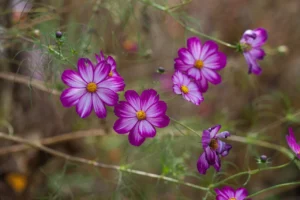
While Cosmos is typically an annual plant, it is possible to overwinter them in pots. To do this, trim back your Cosmos to about 4 to 6 inches in height before the first frost. Bring the pots indoors to a cool, well-lit area, and water sparingly during the winter months. In spring, gradually reintroduce them to outdoor conditions once the risk of frost has passed. While overwintering Cosmos can be a bit more challenging, it’s a rewarding way to enjoy these plants year after year on your balcony.
How Do I Harvest Cosmos Seeds for Future Seasons?
Harvesting Cosmos seeds is a straightforward process. Wait until the Cosmos flowers have fully bloomed and started to fade. The petals will wither and fall off, revealing the seed heads beneath. Gently pluck these seed heads and allow them to air dry for a couple of weeks. Afterward, extract the seeds and store them in a cool, dry place in an airtight container. Properly harvested and stored Cosmos seeds can remain viable for several years, giving you the opportunity to grow these lovely flowers in future balcony gardening seasons.
